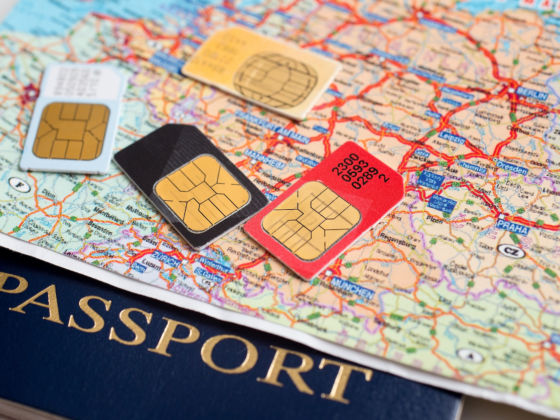Unless you’re a particularly adventurous type who revels in going entirely off the grid, and can’t wait to become totally unreachable, you probably want to travel with a phone that retains most of its normal capabilities without receiving a $10,000 bill in the mail a few months later. The good news is, this is entirely possible. The bad news is that it’s not always cheap or straightforward. It really depends on how long you’ll be abroad for, and what exactly your needs are.

Everything You Need to Know About Using Your Phone Abroad
Short Trips
If you’re going abroad for just a few weeks, or even a month, staying connected is easier than you think, and it shouldn’t cost you a dime. When you board your flight and switch on airplane mode, leave it as is, even when you’ve left the aircraft. With airplane mode switched on during your entire trip, you won’t incur any service or roaming data costs. Airplane mode disables data usage, and prevents incoming and outgoing calls/texts. However, since you can use WiFi while on airplane mode, many phone applications still function, like iMessage, GPS, and any internet-reliant app. That means you can be abroad, with no international plan, and still use Facebook, Instagram, Snapchat, Google Maps, and text as usual with those who have iMessage or WhatsApp. But, of course, for this trick you’ll need an internet connection every time you want to use your cell.
Lengthy Trips
If studying abroad for a year, or planning to travel for several months, you won’t want to limit your phone use to just WiFi — you’ll need a new SIM card and cell plan. While plans vary from country to country, you’ll find plenty of options to choose from. You can usually sign up for either 6 months or a year, and there are even cheap plans that you can cancel at any time. You’ll receive a new SIM card, phone number, and data plan, allowing you to make calls and receive texts within that country in the same manner as if you were back home.
While I was studying abroad in Scotland, I was able to sign up with Vodafone, a local provider, for under $25 (£20) per month. My favorite feature of the plan was the EuroTraveller data package, which allowed me to travel anywhere in Europe and continue using my data for only $4 (£3) a day. This was extremely useful on short trips when I needed data (especially GPS), without having to bother purchasing a local SIM card.
SFR, a French carrier, has no-strings-attached plans that provide unlimited calls and texts, as well as a large amount of data, for less than $20 per month. With those plans, you can also use your phone anywhere in the European Union, France’s overseas departments and territories, Switzerland, Andorra, the US, and Canada.
Important: To use a foreign SIM card in your US phone, it must be unlocked by your provider. When you buy your phone, it’s usually “locked,” meaning the phone can only operate with the carrier through which you have a contract. To insert an international SIM card, however, the phone needs to be “unlocked.” Luckily, unlocking your phone is easy — just go back to where you’ve purchased it or ask you carrier.
For impulsive or multi-country travelers
If you don’t know where you’re going, or how long you’ll be there for, you might want access to a phone number and data services, but not want to commit to a lengthy provider contract. Travelers who like to fly by the seat of their pants would be well-served by a pay-as-you-go SIM card. It might be more expensive in the long term, but you’ll have the flexibility to purchase services as you need them, and then move onto the next country without worrying about a contract. Just remember to watch your minutes and data usage, or your service could shut off at a pretty inconvenient time. You can usually top up your plan online or with credits purchased at a local convenience store.